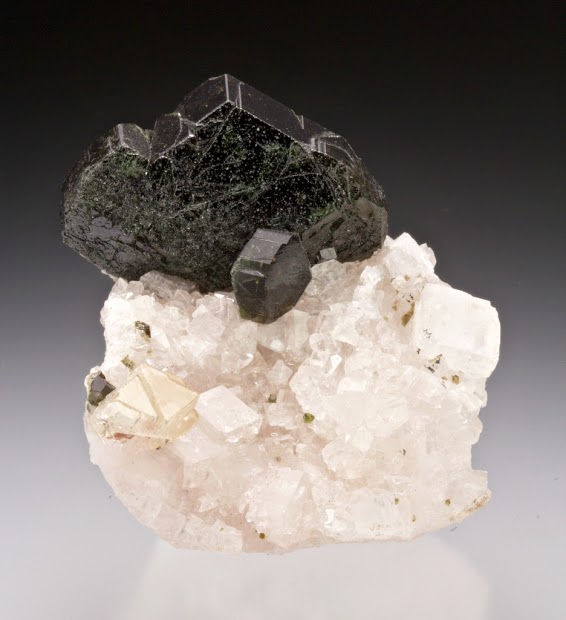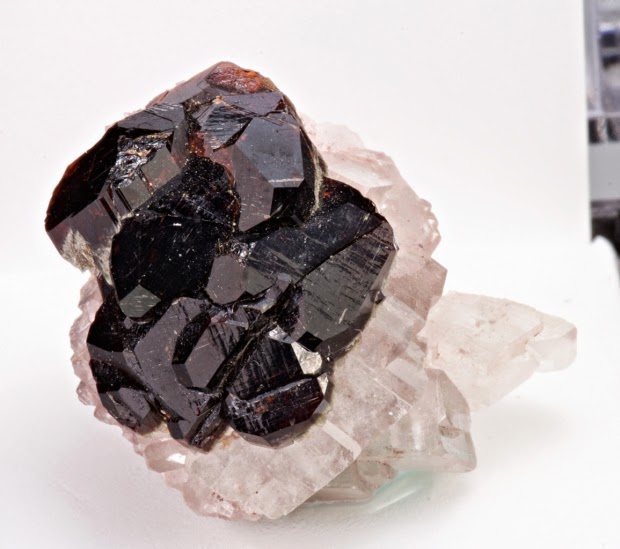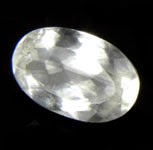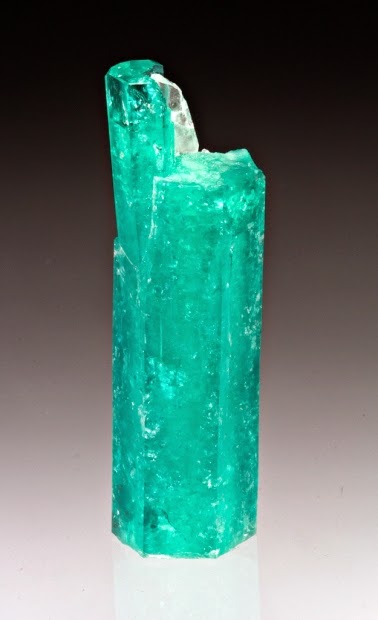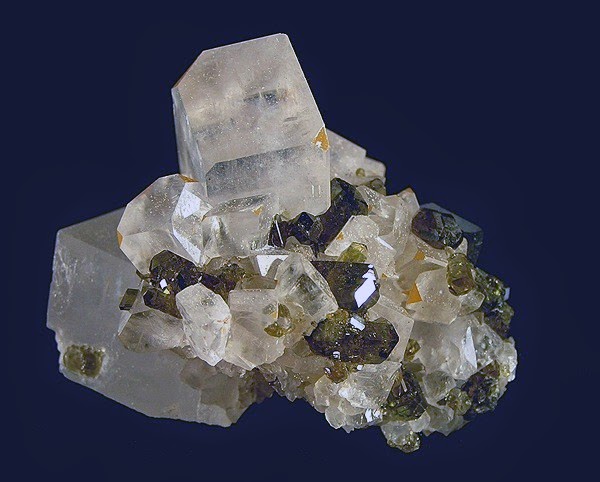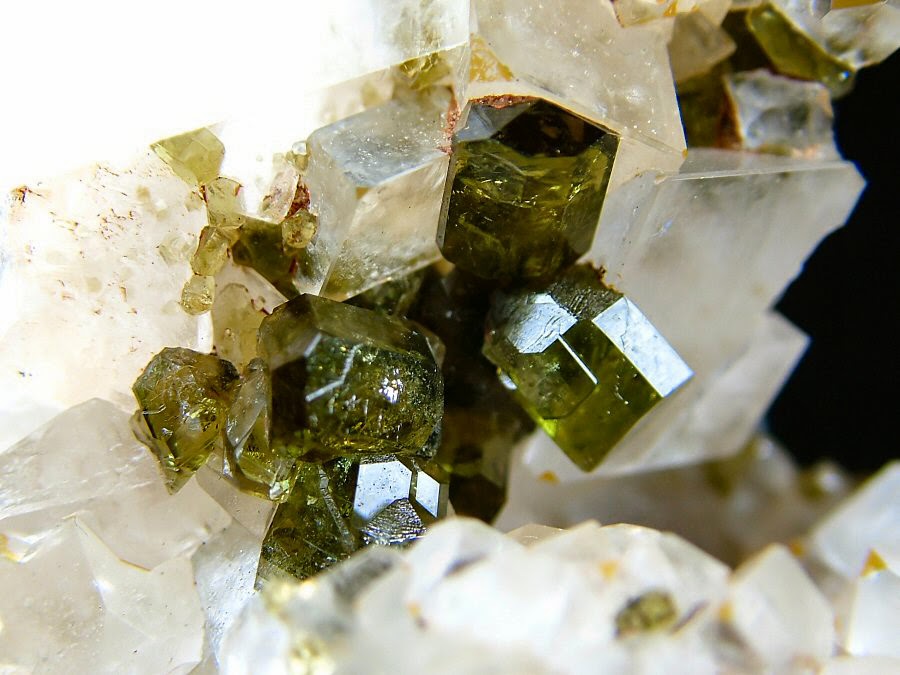
Chemical Formula: MgCO3
Locality: Magnisía (Magnesia) Prefecture, Thessalia (Thessaly) Department, Greece
Name Origin: Named after its chemical composition.
Magnesite is a mineral with the chemical formula MgCO3 (magnesium carbonate). Mixed crystals of iron II carbonate and magnesite (mixed crystals known as ankerite) possess a layered structure: monolayers of carbonate groups alternate with magnesium monolayers as well as iron II carbonate monolayers. Manganese, cobalt and nickel may also occur in small amounts.
Occurrence
Magnesite occurs as veins in and an alteration product of ultramafic rocks, serpentinite and other magnesium rich rock types in both contact and regional metamorphic terrains. These magnesites often are cryptocrystalline and contain silica in the form of opal or chert.
Magnesite is also present within the regolith above ultramafic rocks as a secondary carbonate within soil and subsoil, where it is deposited as a consequence of dissolution of magnesium-bearing minerals by carbon dioxide within groundwaters.
History
Discovery date : 1808
Town of Origin : MAGNESIA, THESSALIE
Country of Origin : GRECE
Optical properties
Optical and misc. Properties : Transparent to translucent to opaque
Refractive Index : from 1,50 to 1,70
Physical Properties
Cleavage: {1011} Perfect, {1011} Perfect, {1011} Perfect
Color: Colorless, White, Grayish white, Yellowish white, Brownish white.
Density: 3
Diaphaneity: Transparent to translucent to opaque
Fracture: Brittle – Conchoidal – Very brittle fracture producing small, conchoidal fragments.
Hardness: 4 – Fluorite
Luminescence: Fluorescent, Short UV=blue white, Long UV=bright blue white.
Luster: Vitreous (Glassy)
Streak: white
Photos :
